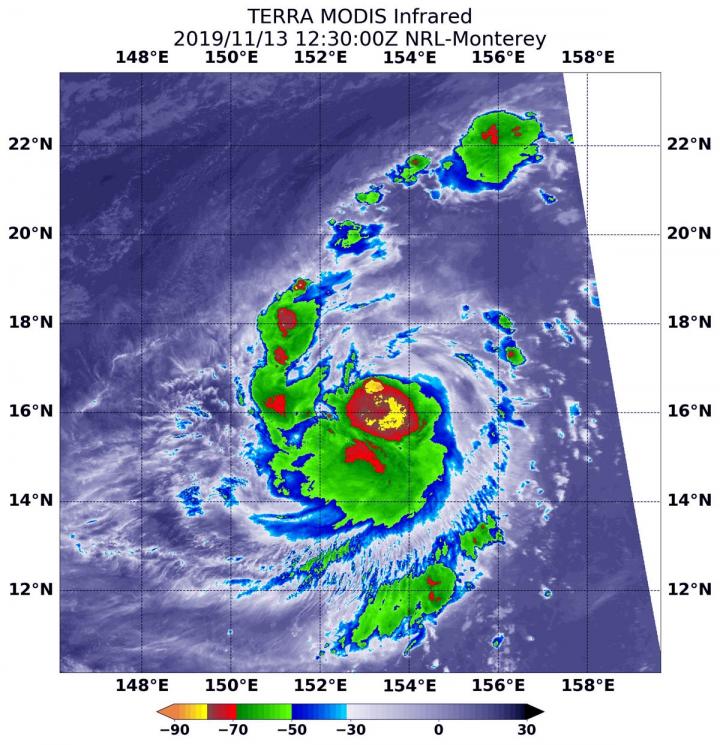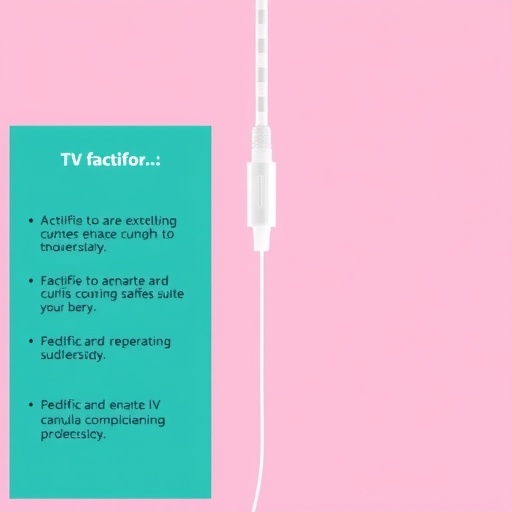
Credit: NASA/NRL
Tropical Storm Fengshen continued to strengthen in the Northwestern Pacific Ocean as NASA’s Terra satellite passed overhead. Infrared imagery from an instrument aboard Terra revealed very high, powerful storms with very cold cloud top temperatures circling the center.
Tropical cyclones are made of up hundreds of thunderstorms, and infrared data can show where the strongest storms are located. They can do that because infrared data provides temperature information, and the strongest thunderstorms that reach highest into the atmosphere have the coldest cloud top temperatures.
On Nov. 13 at 7:30 a.m. EST (1230 UTC), the Moderate Imaging Spectroradiometer or MODIS instrument that flies aboard NASA’s Terra satellite used infrared light to analyze the strength of storms within the tropical cyclone. MODIS found those strongest storms in a very large area stretching from east to south of the center of circulation. In that quadrant cloud top temperatures were as cold as or colder than minus 80 degrees Fahrenheit (minus 62.2 Celsius). NASA research has found that cloud top temperatures that cold indicate strong storms with the potential to generate heavy rainfall. Powerful thunderstorms also circled that area and the entire center of circulation and in a fragmented band extending north of center.
On Nov. 13 at 10 a.m. EST (1500 UTC) or 1 a.m. CHST local time (Guam) a typhoon watch remains in effect for Agrihan, Pagan, and Alamagan in the Commonwealth of the Northern Marianas.
At that time, the center of Tropical Storm Fengshen was located near latitude 17.0 degrees north and longitude 152.1 degrees east. That puts the center about 440 miles east-southeast of Agrihan. Fengshen is moving west at 20 mph. It is expected to make a gradual turn back toward the west-northwest with a slight decrease in forward speed over the next couple days. Maximum sustained winds remain at 50 mph. Fengshen is forecast to intensify through Friday possibly becoming a typhoon.
###
Hurricanes and typhoons are the most powerful weather event on Earth. NASA researches these storms to determine how they rapidly intensify, develop and behave. NASA’s expertise in space and scientific exploration contributes to essential services provided to the American people by other federal agencies, such as hurricane weather forecasting.
By Rob Gutro
NASA’s Goddard Space Flight Center
Media Contact
Rob Gutro
[email protected]
Original Source
https:/





